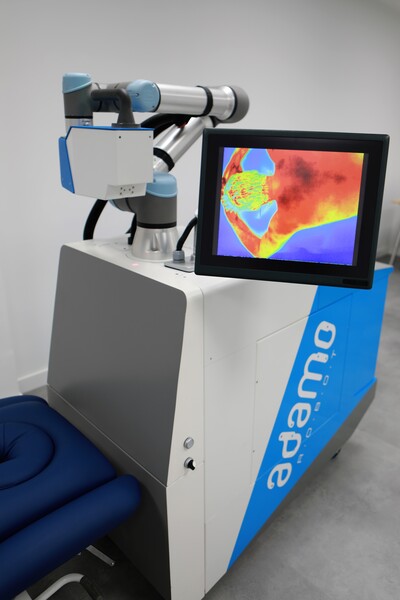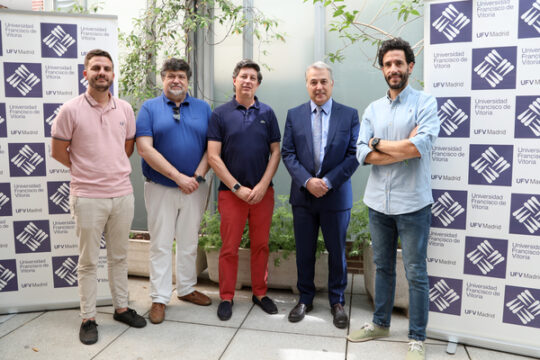The UFV has signed an agreement with ADAMO Robot to carry out activities that promote the creation of new training projects, research, internships, employment and transfer of research results.
Finding new treatments for musculoskeletal pain has become a priority and “one of the most common complaints in the medical practice of patients after having suffered Covid-19”, explains Manuel J. Rodríguez, researcher at the Faculty of Health Sciences (UFV).
Although it is true that in the field of physiotherapy several therapeutic exercise modalities are already used – stretching and mobilisation to control pain and inflammation – until now no standardised treatment has been developed due to the lack of clinical data.
The figure of the physiotherapist, essential
ADAMO’s robotic arm is able to apply non-contact therapeutic mechanical pressure on the rib cage with the aim of reducing pain, inflammation and musculoskeletal stress. But the work of the physiotherapist remains crucial

“The figure of the physiotherapist is indispensable. When a patient suffers from musculoskeletal pain (back, shoulder, knee, etc.) and has been referred by a doctor to the expert, the latter asks the relevant questions, explores the patient’s back and detects the points of pain and pain”, says Jiménez, head of Adamo.
The physiotherapist then virtually marks the points to be treated. And “the ADAMO system traces these points, maps them individually with 3D cameras, sensors and thermography, and memorises them,” explains Jiménez. The physiotherapist then programmes the pressure to be exerted by the robotic arm, as well as the time, at each treatment point.
Pressure and temperatures adapted to each pathology
The collaborative robotic arm manages to reproduce the movements automatically and expels air at high pressure, whose temperature is adjustable, so that the patient has a pleasant sensation during the session while at the same time adapting the temperature to the physiological needs of the pathology being treated.
Deep Learning to support the work of the physiotherapist
The collaboration between CEIEC-UFV and ADAMO will allow the creation of Deep Learning models that, thanks to the data collected, will support the physiotherapist in establishing a diagnosis, monitoring and a much more objective treatment proposal.
In this sense, “thanks to the thermography integrated in the robotic arm, we will be able to measure the patient’s recovery. In other words, it will give us the time needed for recovery at the same time as we can quantify the pain,” explains Carlos Jiménez, CEO of ADAMO.
On the other hand, the thermographic camera and the 3D camera “allow us to support the physiotherapist in the diagnosis and generate a more accurate treatment”, concludes Manuel Rodríguez, researcher at the UFV Faculty of Health Sciences

